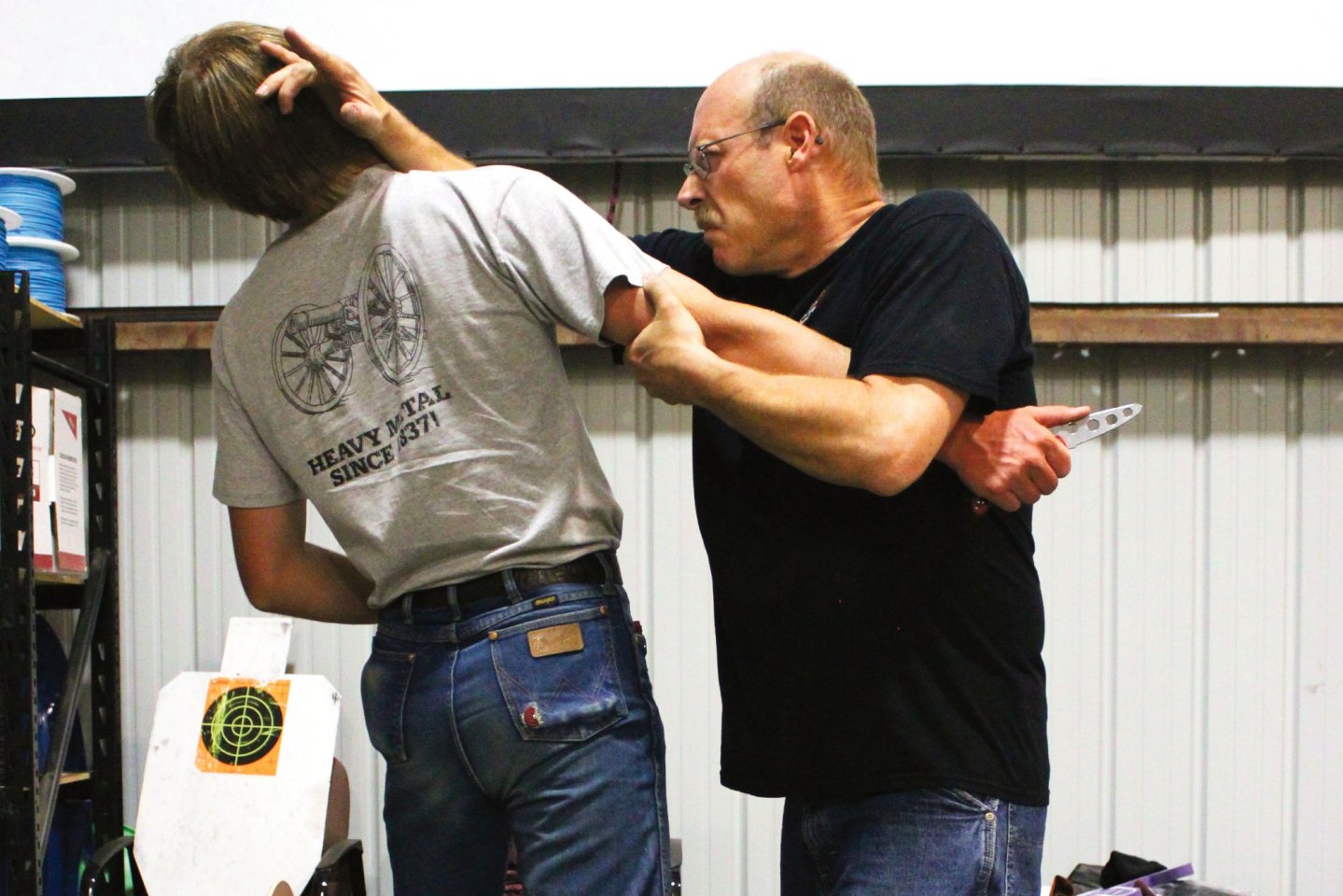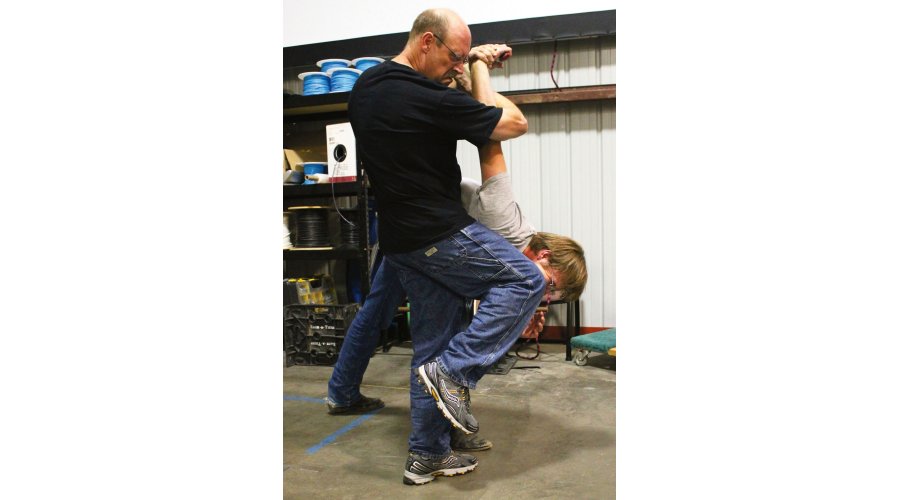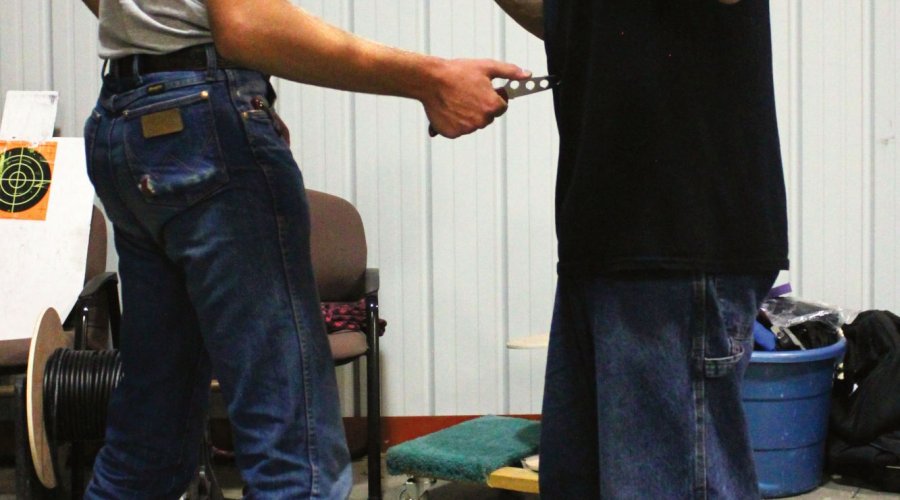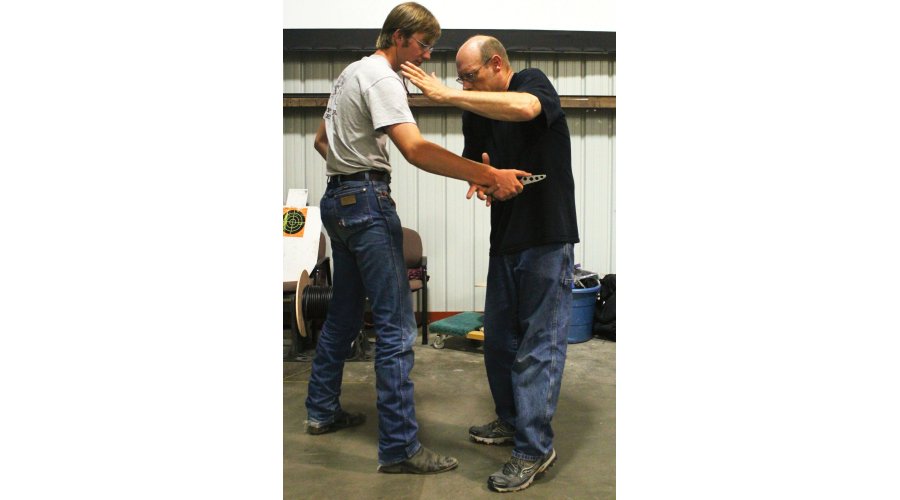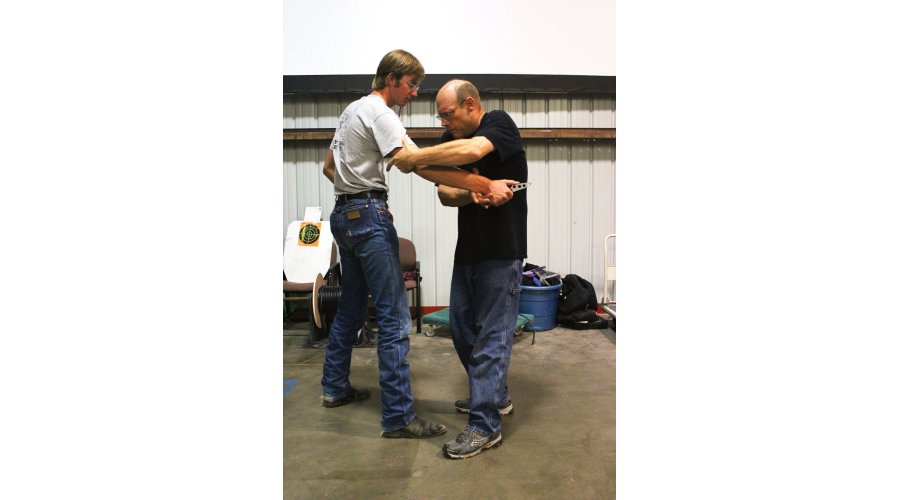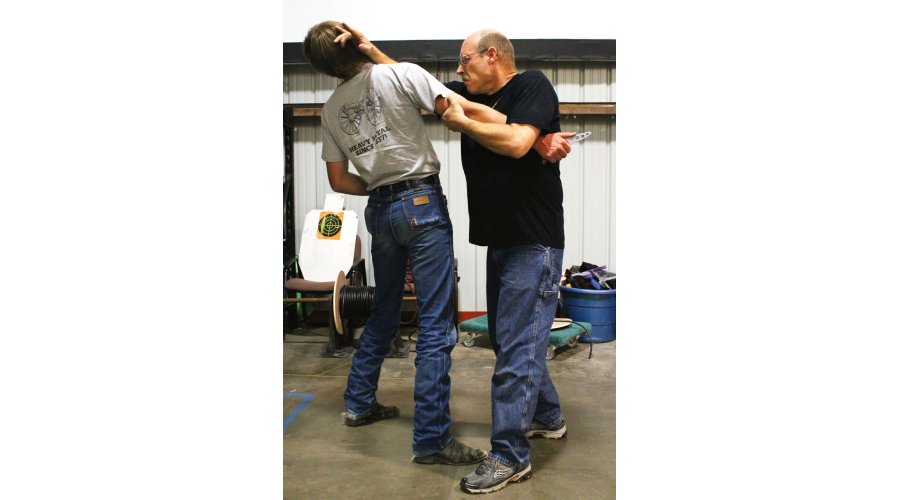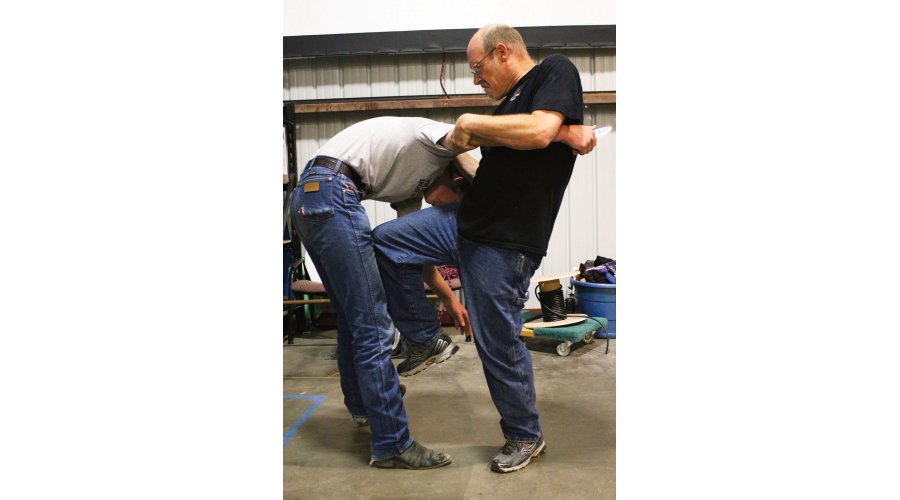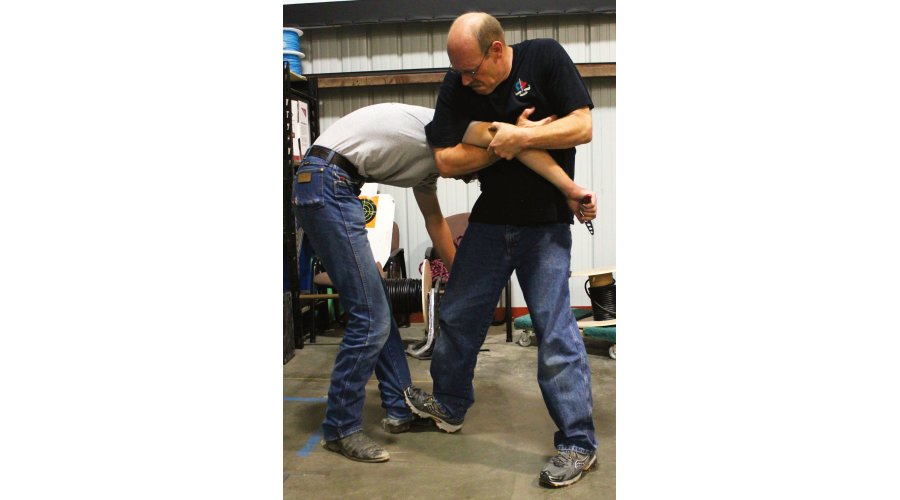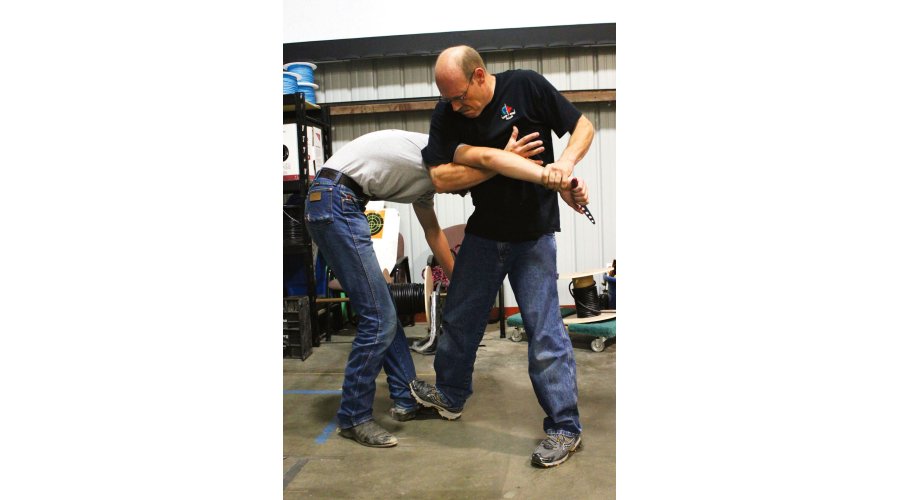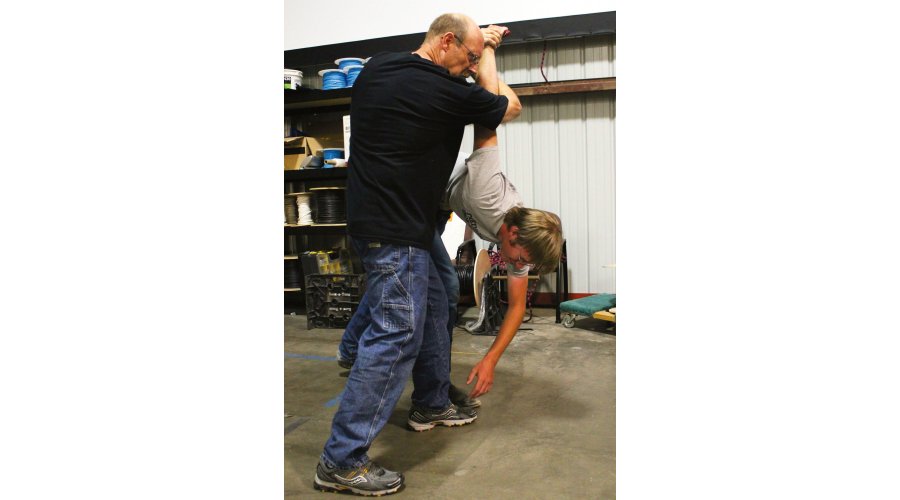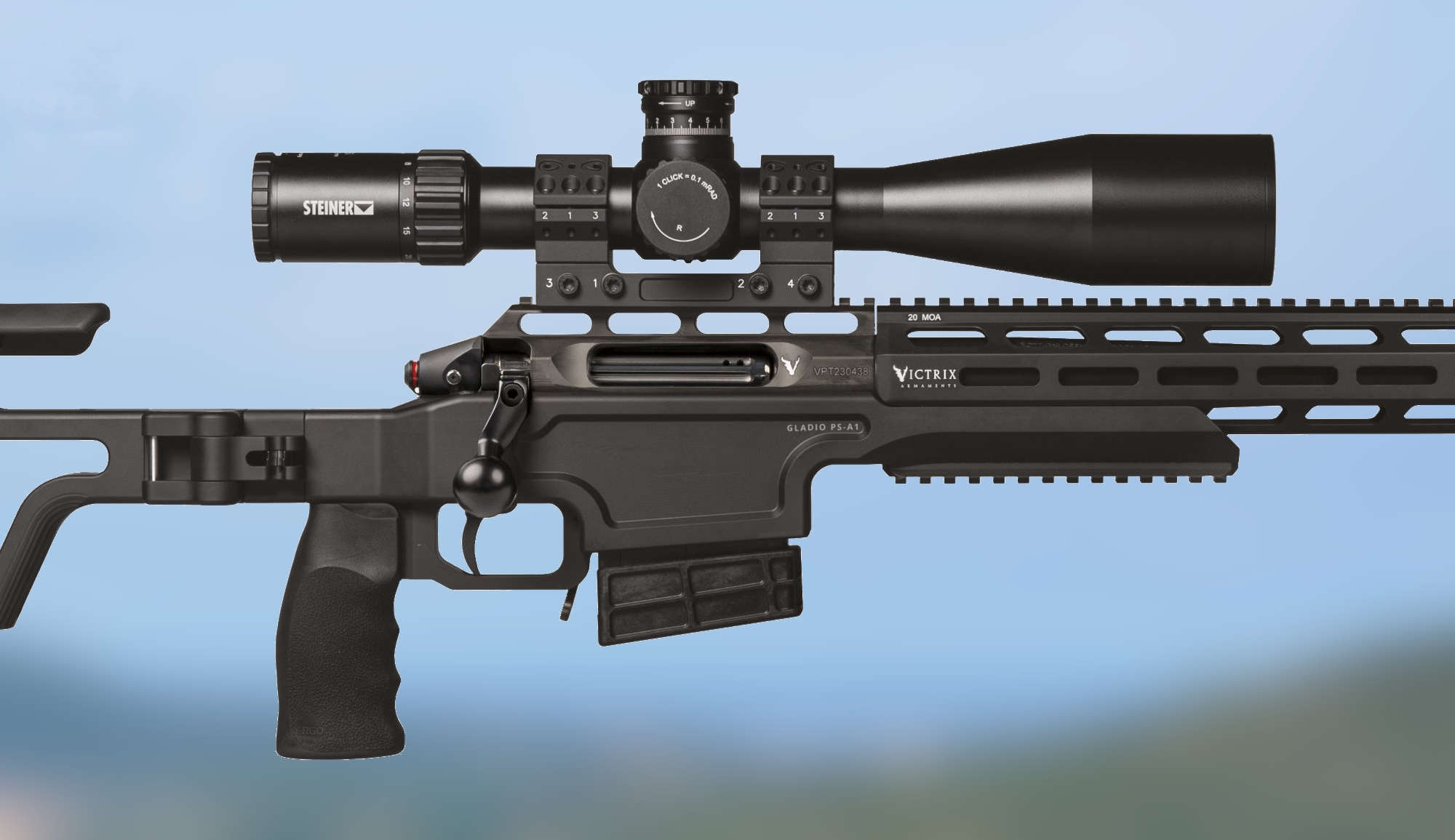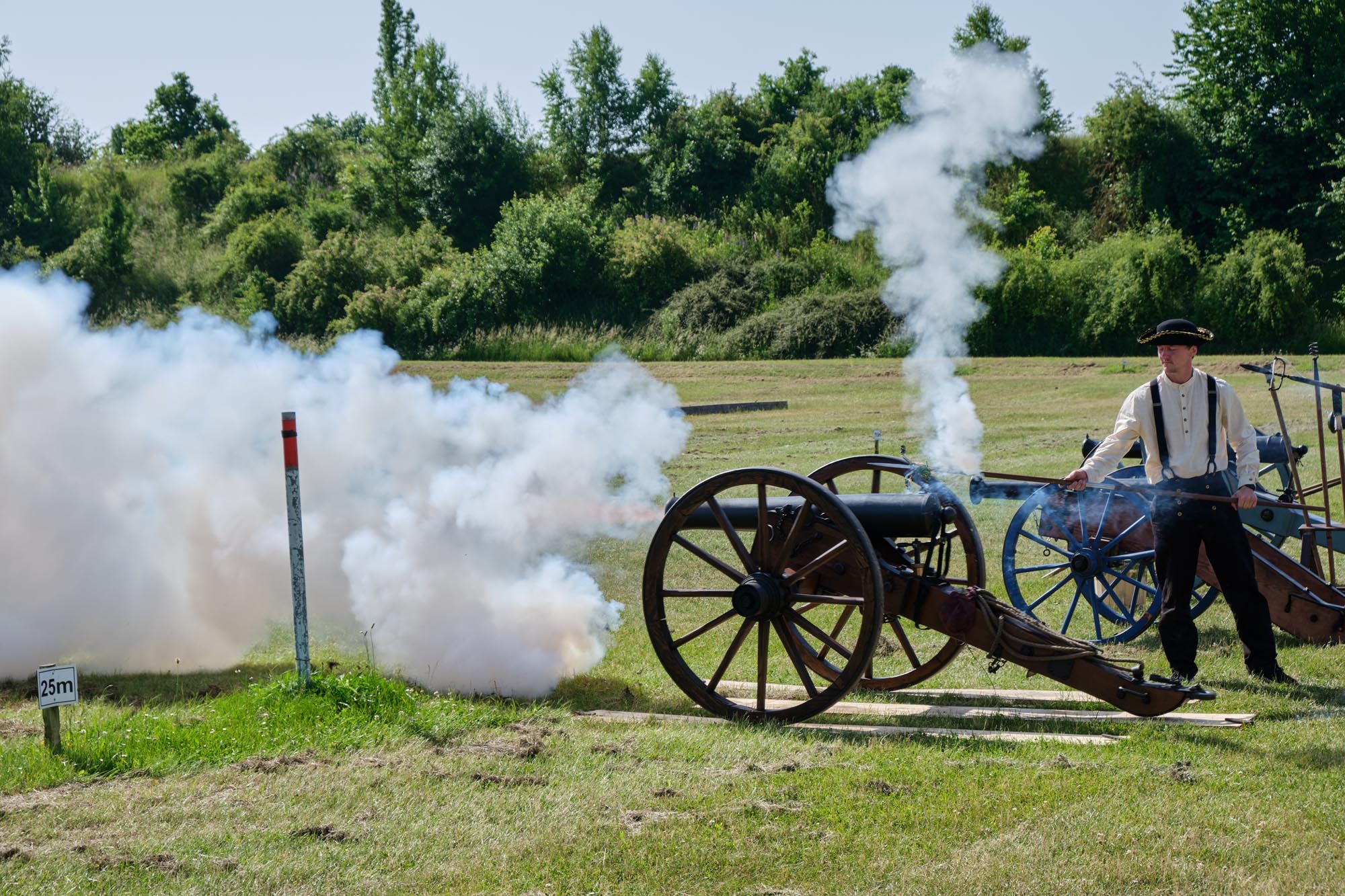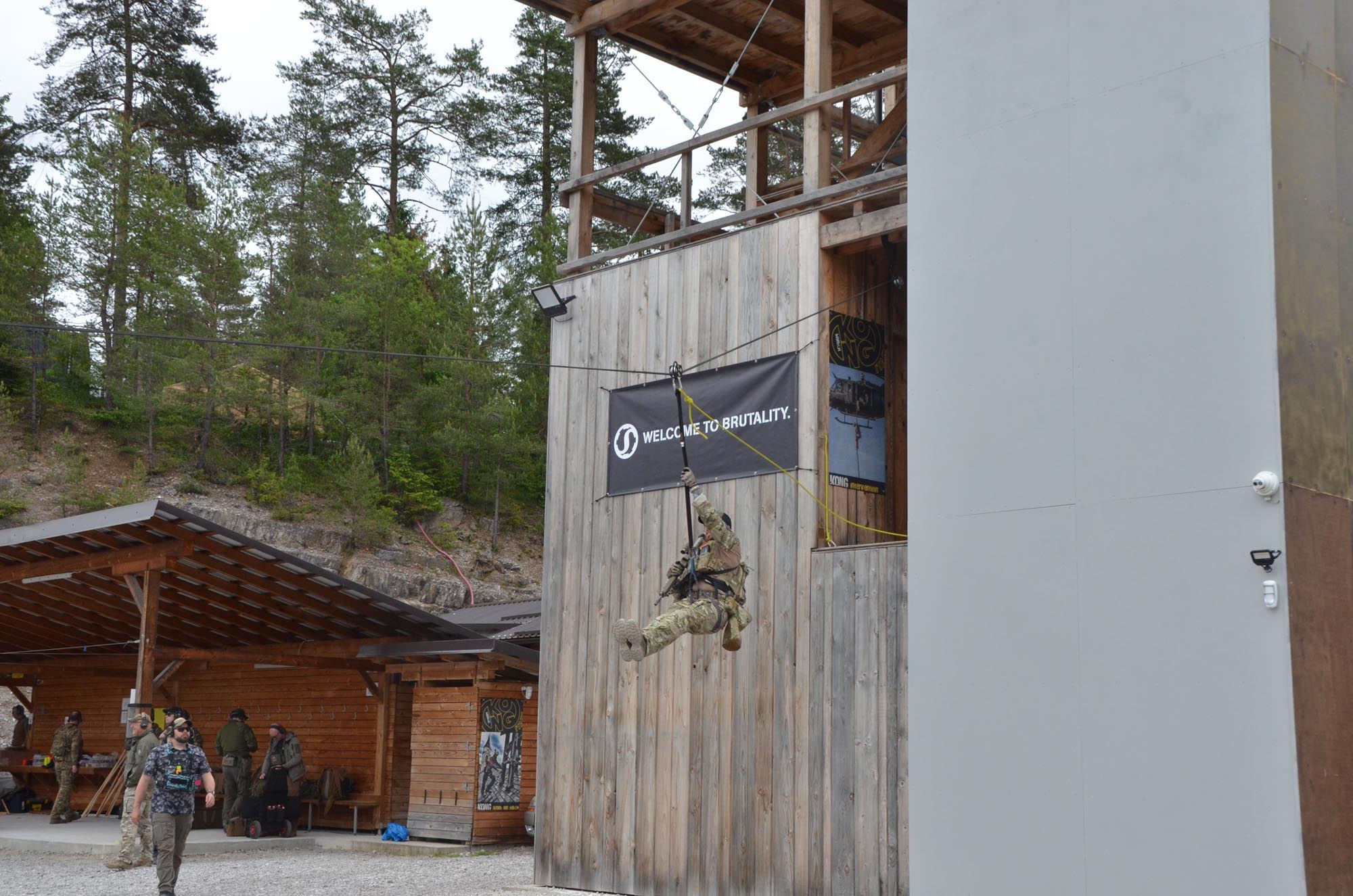In most cases, the goal of the aggressor is to relieve us of our wallets, credit cards, jewelry or other expensive items by threatening us with a weapon. However, even if we signal our immediate willingness to cooperate and to hand out the desired objects, there's no guarantee that the aggressor will refrain from hurting us anyway. Obviously, the smartest way to defend yourself against such armed robberies is walking through life as vigilantly as possible and recognize dangers so early that you can simply avoid them. Best protection: an early warning system! The more attentively you register the activity around you in every situation, the higher is the chance to detect problems or dangers early and to avoid them.
If no early detection is possible, a defense sequence follows
However, if you have already missed this opportunity and are confronted with an armed robber within contact distance, your defensive measures should be based on a simple, logical sequence of actions:
- Seek maximum proximity: even if it may sound strange, if you are threatened by an armed person within contact distance, close proximity is better. As long as you are not so close that you can touch the weapon or hand holding it, you have little to oppose the threat. Should it be necessary and above all possible, you should move even closer to the aggressor.
- Start communication: in order to create the opportunity to be able to carry out your defense at all, you have to buy time by ideally getting the counterpart to think about something other than harming you. Ask the aggressor to relax and stay cool, promising money or credit cards, and then ask a question as a distraction. Example: relax, I have 50 euros in my pocket, is that enough? While the aggressor thinks about it, "enough for what?", we make our move.
- Bring your hands as close as possible to the weapon arm. Raising your hands reinforces the impression to our counterpart that you want to act cooperatively. Carry out your movements as subtly and calmly as possible. While getting yourself into the best possible position, talk to the robber all the time.
- Choose a direction: if the aggressor has a weapon aimed at your body or is pressing it against you - such as a knife on the neck side - choose a direction of movement that will move the weapon away from you in a safe direction. If the opponent is armed with a firearm, choose a direction in which to move the robber's weapon and which takes your own body out of the line of fire.
- Steer the weapon away from your body: move the weapon quickly and efficiently away from your body. Use natural hitting, clapping movements with the palm of your hand, focusing on the opponent's weapon-wielding hand.
- Control the weapon arm as quickly as possible: the best way to achieve this is to grab the arm above the elbow and pull it powerfully under your own arm and trap it. This restricts the movement of the aggressor's arm at the shoulder joint and allows you to control the weapon, its movement and alignment.
- Strike until the opponent is incapable of action: if you have to defend yourself with empty hands against an armed attacker, it is far more important to take the aggressor out than to disarm him/her. In many martial arts and self-defense systems, the focus is on removing the weapon from the attacker's hand. This is almost impossible if the opponent is carrying a small weapon such as a carpet knife or a subcompact firearm. Instead, use blows and kicks to attack particularly sensitive targets such as the eyes, neck, groin, knees and ankles. Your most important goal is to destroy the attacker's fighting ability.
- Disarm if necessary: if the aggressor is equipped with a firearm, disarm him/her before breaking contact to make sure your opponent can't still fire the weapon during your escape.
- Create a distance: if the attacker is incapable of action, create a distance and seek the opportunity to escape.
Defense against a street robber with a knife
In order to illustrate the described movements, we assume at this point that a mugger is threatening us with a knife held in front of our stomach. Because the mugger already touches you with the tip of a blade, you are already in close contact, so that your direction of movement only plays a subordinate role. Speak soothingly to your counterpart and slowly move your hands with calming gestures to get closer to the knife. Ask the aggressor a question to confuse him, and without "telegraphing" your movement, slap the weapon hand with your right hand in a clapping action. As you do this, pull your belly in and away from the tip of the blade, extending your left hand and grabbing the robber's arm back above the elbow. Pull the opponent's arm towards you and clamp it under your left armpit to gain control of the weapon-wielding arm. At the same time, hit the other person's neck side with your right hand or forearm. This move-stroke combination should be executed simultaneously to achieve maximum efficiency. The strike against the neck should be aimed at the carotid artery, the point where the fingers are otherwise also placed to check the pulse. Immediately after hitting the neck, hook your hand into the aggressor's neck and bend the robber forward to fire knee strikes into the groin. It should be noted that you must pull your elbows in the direction of the ribs in order to use the additional strength of the back muscles. To complete your defense, get your right arm over the robber's weapon arm and forcefully press your hand against your belly to secure the weapon arm. Then slide your left hand down to grab the opponent's wrist. Bring both hands together to execute an arm lever, called "ude garami" in classical judo, for example. Turning to the right, exert downward pressure with the back of your right shoulder by raising your hands, and thus the opponent's weapon hand, to complete the arm lever. At the end of your turning movement, send multiple knee blows to the attacker's head to finally neutralize the robber. Fending off weapons at close range requires logically structured techniques as well as correct and constant training. Train hard and stay safe!
You can read the other parts of our series here
- Basics of self-defense and the defense against the "swing" ·
- The defense against a “stranglehold” attack
- The standard sequence as the foundation of successful self-defense
- The defense against a common street attack: the collar grip
- The defense against improvised weapons
- Self-defense in ground fighting
- The defense against kicks on the ground
- Defense techniques with the walking stick
- Advanced stick techniques
- Knife defense with bare hands
- Knife defense: the "Split X"
- Knife defense: shield defense tactics
- The control position


